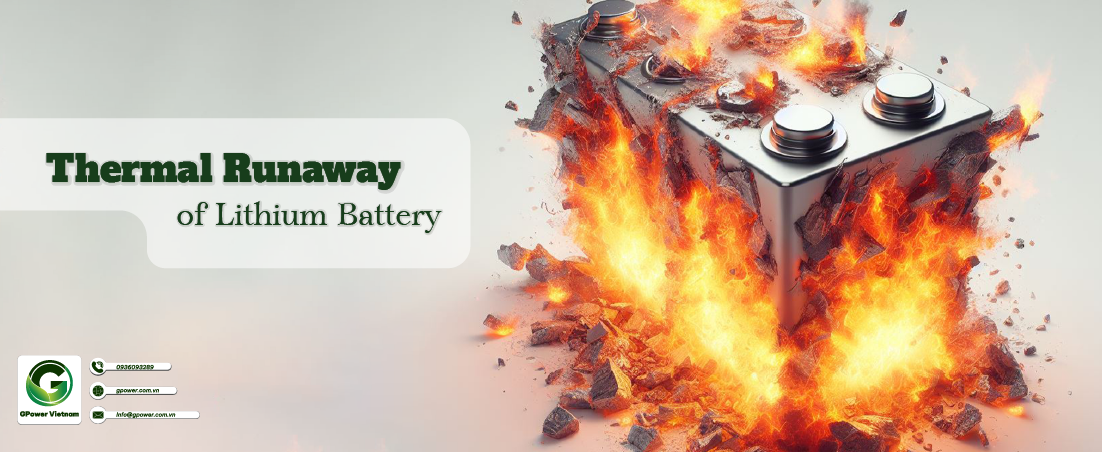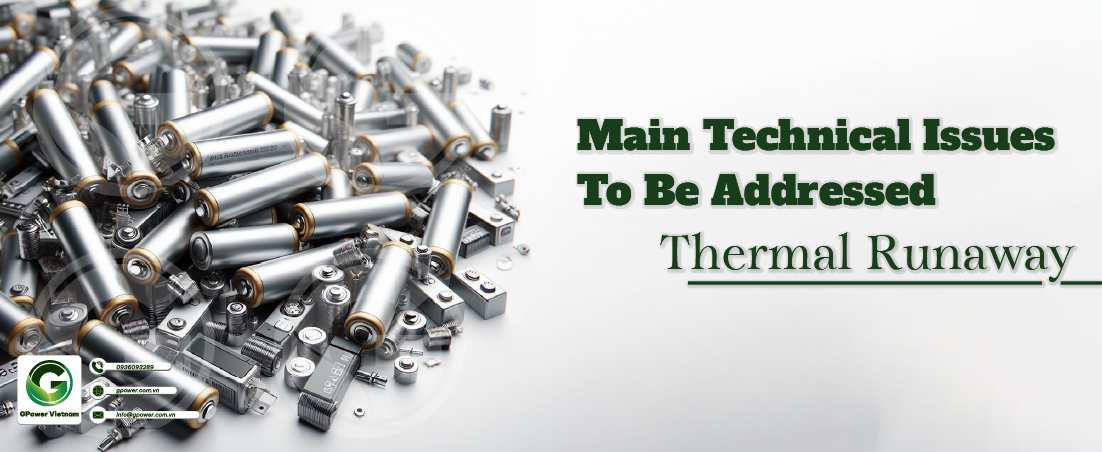With the development of the automobile industry, Alternative fuel vehicle have become a force that cannot be ignored in recent years. With the increasing use of new energy vehicles, we often see news about the spontaneous combustion, explosion and other aspects of new energy vehicles. The essence of new energy vehicle safety accidents is actually battery Thermal runaway. This paper briefly introduces the status quo of Thermal runaway, existing problems, problems to be solved, and technical measures and methods to be taken.
1. Thermal runaway
Thermal runaway refers to the phenomenon of overheating, fire and explosion caused by the heat release chain reaction of the single battery, which causes the rapid change of the self temperature rise rate of the battery.

2. Existing problems
With the continuous improvement of energy density of lithium-ion batteries, improving their safety is increasingly urgent for the development of electric vehicles. In practice, how to accurately detect electrolyte leakage in the early stage is a considerable challenge, The difficulty lies in being both “early” and “accurate”, as well as complying with a series of application environments such as “cars” and “battery boxes”.
Because highly sensitive sensors can be affected by the volatile gas from the sealing material in the battery box, causing false alarms; and low sensitivity sensors lose their early warning function. As is well known, due to the severity of battery fires, the consequences of delayed alarms are extremely serious and unbearable
3. Main technical issues to be addressed
(1) Multiple spontaneous combustion incidents have occurred in new energy electric vehicles, sounding the alarm for the safety of electric vehicles once again. Experts pointed out that battery Thermal runaway is the main reason for power battery fire. For lithium-ion batteries, Thermal runaway is the most serious safety accident, which causes lithium-ion batteries to catch fire or even explode, directly threatening the life safety of users.
(2) The conditions of Thermal runaway are different for different electric cells. Through the detection of different trigger conditions of Thermal runaway for electric cells, early warning and intelligent control of battery fire hazards can be realized, and early warning to passengers can be carried out in advance.
(3) Through the detection of Thermal runaway, the electric vehicle can have the advantages of very early, accurate and reliable, no false alarm and missing report, and the cost can be optimized, thus becoming the best technical scheme to ensure the safe operation of new energy vehicles.

4. Proposed technical measures and methods
(1) The factors that cause runaway heating are generally divided into two categories, internal factors and external factors. The main internal factors are: battery production defects leading to internal short circuits; Improper use of the battery leads to the generation of lithium dendrites inside, causing a short circuit between the positive and negative electrodes. The main external factors are: external factors such as squeezing and needling that cause short circuits in lithium-ion batteries; The external short circuit of the battery causes the accumulation of heat inside the battery to be too fast; Excessive external temperature leads to the decomposition of SEI film and positive electrode materials.
(2) Test of Thermal runaway of single electric cell. The phenomenon of Thermal runaway of different models of electric cores from different manufacturers is different. What we need to do is to test the triggering conditions of Thermal runaway of the single electric core and the phenomenon of Thermal runaway for the electric core used in the current project.
(3) Heating contact heating out of control test. Use a flat or rod-shaped heating device, and the surface of the well should be covered with a ceramic, metal, or insulation layer. The heating area of the testing equipment shall not exceed the surface area of the battery cell; Contact the heating surface of the heating device directly with the surface of the single battery, and stop triggering when Thermal runaway occurs or the temperature of the monitoring point reaches 300 ℃
(4) Acupuncture contact heating out of control test. The specific testing content is: the material used for the needle should be steel, and the diameter of the needle should be 3 mm~8 mm; The shape of the needle tip is conical, with an angle of 20 °~60 °; The needle test shall be conducted at the speed of 0.1 mm/s~10 mm/s along the position and direction (for example, the direction perpendicular to the pole piece) where Thermal runaway can trigger the cell.
(5) Judgment of Thermal runaway conditions. When the temperature exceeds a certain threshold, a judgment warning is given. When the smoke bench exceeds a certain threshold, a judgment warning is given. When the gas exceeds a certain threshold, a judgment warning is given. When the flame exceeds a certain threshold, a judgment warning is given; The purpose of the system is to set accurate priorities to effectively identify different states and always provide effective protection
5. Significance in theory and application
In the early stage of Thermal runaway of lithium-ion batteries, due to the slow change of battery temperature, discharge voltage, discharge current and other characteristic identification parameters, battery failure cannot be detected as early as possible through modern BMS. At this time, the electrochemical reaction inside the battery will produce a large number of gas substances. Therefore, it is theoretically feasible to use gas detection sensors to achieve early warning of Thermal runaway of lithium-ion batteries. For a lithium-ion battery system that requires safety and stability, Thermal runaway and Thermal runaway diffusion during use are both manifestations of lack of safety.
In the early stage of Thermal runaway of lithium-ion batteries, due to the slow change of battery temperature, discharge voltage, discharge current and other characteristic identification parameters, battery failure cannot be detected as early as possible through modern BMS. At this time, the electrochemical reaction inside the battery will produce a large number of gas substances. Therefore, it is theoretically feasible to use gas detection sensors to achieve early warning of Thermal runaway of lithium-ion batteries.
For a lithium-ion battery system that requires safety and stability, Thermal runaway and Thermal runaway diffusion during use are both manifestations of lack of safety. Due to the high energy density of lithium-ion batteries and the particularity of the release of energy, harmful gases, etc., the Thermal runaway diffusion test mentioned in many standards is actually to ensure that the system must have accurate feedback when a single Thermal runaway is about to occur. It is required that this feedback signal should not be missed or misreported, so as to ensure that the battery system safety treatment plan has sufficient starting time, The battery system is required to have a certain ability to inhibit or delay the diffusion of Thermal runaway, so as to ensure that personnel can assess the severity of the accident and reserve sufficient evacuation time before its destructive force threatens personal safety, so as to prevent further expansion of personal hazards.





